Do you have a bunch of capacitors laying around and are unable to use them because you don’t know their value? Along with resistors, capacitors are the second most used part in almost any audio circuit, and being able to read their value is a must for any electronic hobbyist. Keep reading and learn how to know a capacitor value by its labeling!
CAPACITORS – UNITS
Being able to quickly read a capacitor value and being able to switch between units is an essential skill that will help you save a lot of time when building your effect pedals or even your own DIY projects. First of all, we’ll explain how units work with capacitors. The basic capacitor unit is the Farad. The problem is that this unit is really huge, and in most projects capacitor values are way lower, and dealing with numbers like 0,0000000047 Farads is quite uncomfortable and prone to mistakes. That’s why, while with resistors we use kiloOhms (10³ Ohms) and MegaOhms (10⁶ Ohms), with capacitors we use divisors of the main unit. Here they are:
- picoFarads (pF) are the lowest unit used in audio circuits, and is commonly associated with ceramic capacitors as they have a really low value. 1pF = 10⁻¹² F = 0,000000000001 F
- nanoFarads (nF) is the most common unit, and standard polyester capacitors usually fall within this range. 1nF = 10⁻⁹ F = 0,000000001 F
- microFarads (µF) is mostly used with electrolytic capacitors, as they have a higher capacitance value than the others. 1µF = 10⁻⁶ F = 0,000001 F
As this might seem a bit confusing, here’s a capacitor reference chart with the relation between them:
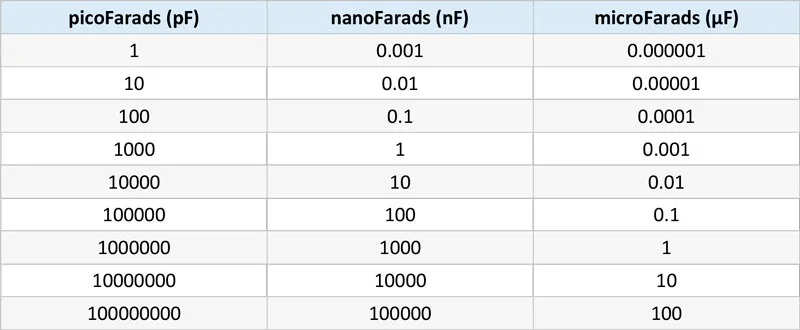
CAPACITORS – READING
To make it a bit more difficult, not all the capacitors share the same labeling system, so we have to make a difference between the main 3 capacitor types: electrolytic, ceramic and polyester. We’ll start with electrolytics as they are the most straightforward ones to read. Polyester and ceramic share the same labeling system, but with some small differences. For the following examples, we’ll be using pictures of some of the capacitors we send with our DIY effect pedal kits, so be sure to get one and put your knowledge into practice!
1 – Electrolytic Capacitors
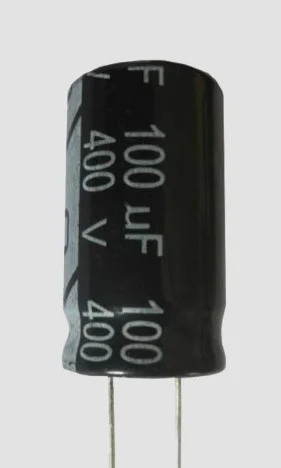
Example: 100µF electrolytic capacitor, 400V maximum.
Electrolytic capacitors are pretty simple to read: as they are quite big compared to the rest, the value is directly written in the enclosure. The value unit is also specified, but as they have large capacitance values the chosen unit is the microFarad (µF) almost 100% of the time, even when the unit is smaller (i.e. a 220nF electrolytic capacitor will be labeled as 0.22µF and not 220nF). Additionally, the maximum voltage of the capacitor can also be read. This is the voltage value that should not be exceeded under any circumstance, as the capacitor could be permanently damaged and even explode.
2 – Ceramic Capacitors
Ceramic capacitors are way smaller than electrolytics, and thus the full value plus unit can’t be written on them. Instead, they have a 3 digit coding system. The first two digits represent the value of the capacitor, and the third one the number of zeros to add to the right. With this, we get the capacitor value in picoFarads.
Example 1: the ceramic capacitor is labeled as 104
– 10 → base value
– 4 → number of zeros to add
– Value: 100000 pF = 100nF
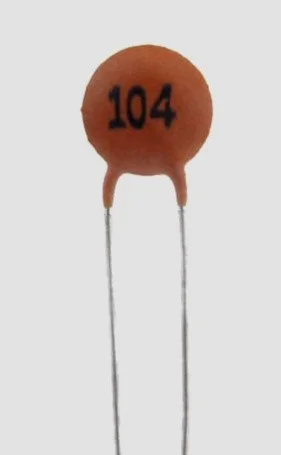
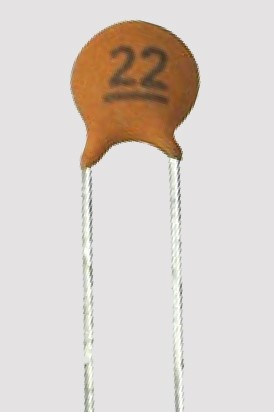
Example 2:
This capacitor only has two digits. What to do in this case? When the value is smaller than 100pF, only two digits are used to mark the capacitor value directly. In this case, we have a 22pF capacitor. Usual values are 47pF (labeled 47), 470pF (labeled 471) Regarding maximum voltages, ceramic capacitors have large values (~50V) so it’s pretty unlikely that you will damage them by exceeding it!
3 – Polyester Capacitors
If you can read properly ceramic capacitors you should have no problem with polyesters! Polyester capacitor labeling works the same way than with ceramics, but they usually have more information written on them. They may seem a bit more confusing because of that, but you only have to focus on the three consecutive digits. Unlike ceramics, that may have two digits for some values, polyesters always have three digits, so you should find it easy to identify them. The extra information only appears in some cases, and shows the tolerance, which is how much the real value can differ from the labeled one (the letter next to the value) and the maximum voltage rating that should not be exceeded (digit + letter code or number, depending on the capacitor). In the chart below you can find the equivalences between the codes and the values.
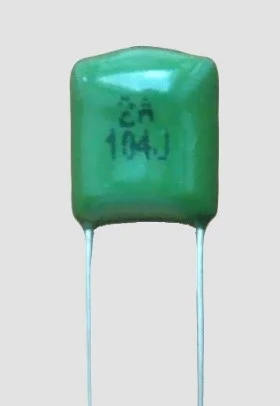
Example 1: green polyester capacitor labeled as 2A104J
– 10 → base value
– 4 → number of zeros to add
– 2A → 100V, labeled with a digit+letter code
– J → 5% tolerance
– Value: 100000 pF → 100nF ± 5%, 100V maximum
– How much can the real value differ from the labeled one? 100nF x 5% = 5nF → the real value of the capacitor will be within the range 95nF – 105nF
While resistors have a tighter tolerance (usually 1%-5%), with capacitors everything below 10% is a good tolerance, and we design our effect pedal circuits so these tolerances have no influence in the final result.

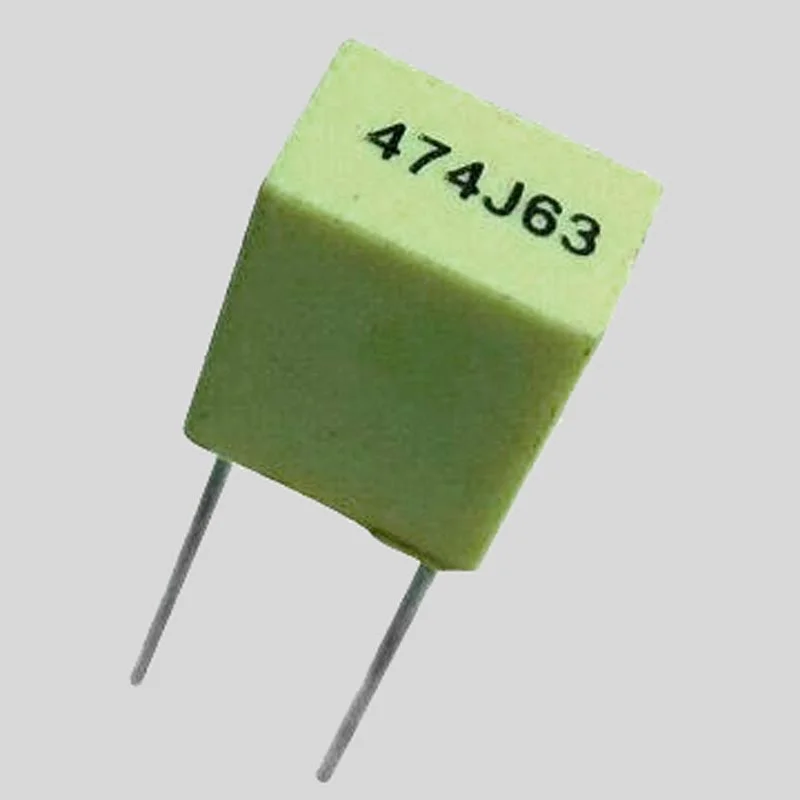
Example 2: box type polyester capacitor, labeled as 474J63
– 47 → base value
– 4 → number of zeros to add
– 63 → 63V maximum (labeled directly with the voltage value)
– J → 5% tolerance
– Value: 470000 pF → 470nF ± 5%, 63V
– How much can the real value differ from the labeled one? 470nF x 5% = 23.5nF → the real value of the capacitor will be within the range 446.5nF – 493.5nF
The best way to test your knowledge is to put it into practice, so be sure to visit our kit section where you’ll find effect pedal kits with everything you need to build your own effect pedal.
We hope you found this post useful! If you liked it, share it and help other people get better with their capacitor reading skills 😉

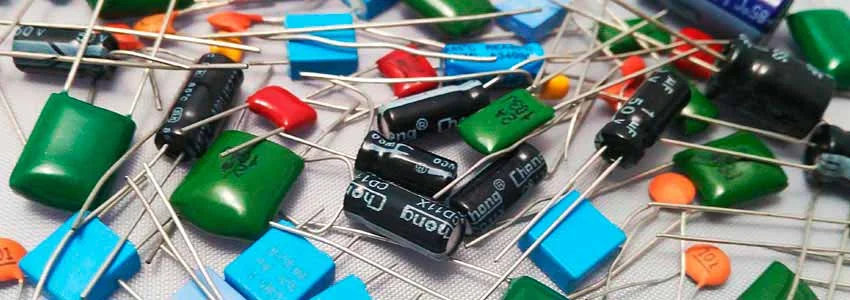
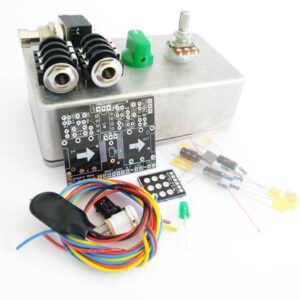
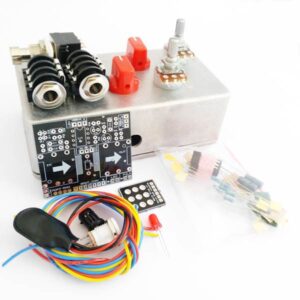
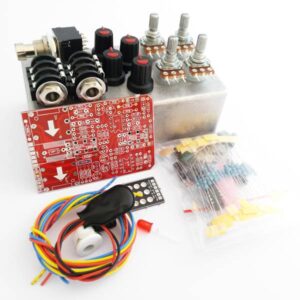
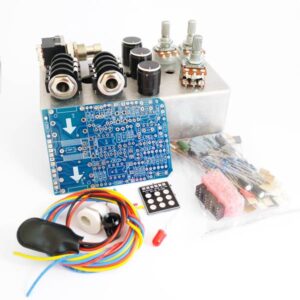
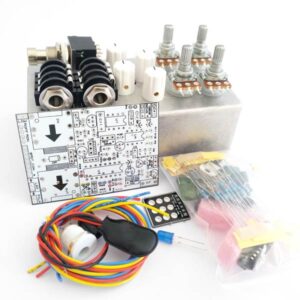
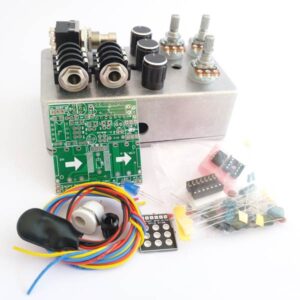
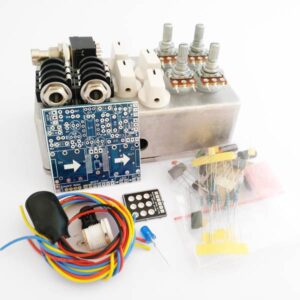
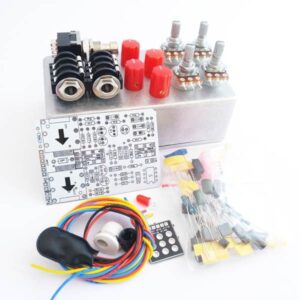
Very helpful n simple to understand also make detailed information on smd resistance as they are in various nano sizes